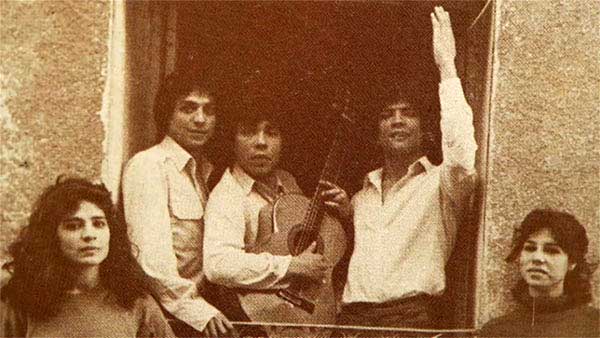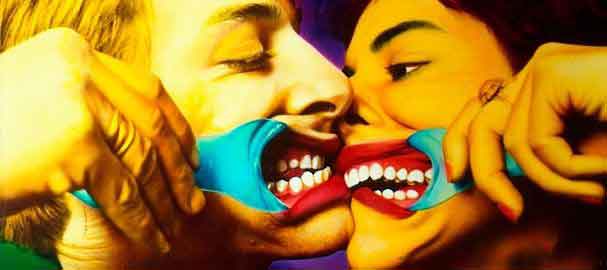History of Rumba Catalana
9. Spanish Gypsies, Rumba and the Movida
Gypsies in the Movida Era, a Family Portrait
Vouching for a new era of progress, the Spanish left did not make it easy for Gypsies to keep up with traditions
As is Often the Case in Gypsy Bands, the Family is Crucial
Faced with the commercial success of the rumba Catalana genre, all over Spain, families historically rooted in flamenco started to play rumba, with the hope of better days. Like the Salazars, who came from Extremadura to Madrid, in the district of Vallecas, living in extreme poverty. The father, Jose Salazar Molina, known as Porrinas de Badajoz, was one of the great flamenco singers of the 20th century.

The Young Gipsy Generations, Critical of the Past as well as of the “Democratic Transition”
For the Salazar children, rumba is both an opportunity to break the clichés about Gypsies and to question certain traditions. The sisters Encarna and Toñi,, forming the duo Azucar Moreno, were very early involved in the struggle for the emancipation of Gypsy women.
Exuberant, provocative, not hesitating to share the front page of an erotic magazine with Madonna, they are still popular icons today, after having been “influencers” before their time.
Their brothers formed the group Los Chunguitos, pioneers of the Rumba Taleguera.
Unfortunately, they had to endure the hypocrisy of the Spanish left, which was contemptuous of the “uncultured, reactionary and unambitious” Gypsies, who were accused of having participated in Franco’s cultural propaganda. Turning its back on popular music and political issues, the Movida did not help either.
The Movida was a major creative cultural movement, initiated from Madrid, during the end of the period of Spanish democratic transition, in the early 1980s, after the death of General Franco. With cynicism, cocaine and debauchery, the will to subvert that had been brewing for some time before Franco’s death quickly gave way to apolitical desires of consumerism, hedonism and transgression. The ideals of social justice were replaced by a desire for social ascension, to which the Gypsies were not invited.
In retrospect, more people are now considering the Movida as a spectacular simulacrum of counter-culture which served as an outlet for a bourgeois youth deprived of freedom, having lived their childhood in an anachronistic world. A ritual of passage in the reality of consumerism.

The Movida faded out as fast as it had started, leaving few durable traces of its cultural revolution, like a ship sinking with all its passengers, so to speak, when its captain, Tierno Galván, Mayor of Madrid, who had heavily encouraged and subsidized the movement, died in 1986. The party was over.
The music of Gypsy bands had become the standard of the left-behind of the Spanish society, victims of the urban ghettoization started in the 1960s, and will be a lasting success. The Gypsies went on with rumba taleguera well into the 2000s and most Gypsy bands from the 70s have since acquired cult status and national recognition.
The spirit of the Quinquis is still very much alive, a major source of inspiration for the Spanish rap scene. It is worth noting that they frequently mock the Movida.
IN THE NEXT CHAPTER :
The rumba taleguera became the soundtrack of a new cinematographic genre, “el cine quinqui“, a popular genre, nourished by sex, drugs and violence, denouncing the abandonment of the poor neighborhoods of the Madrid periphery.

